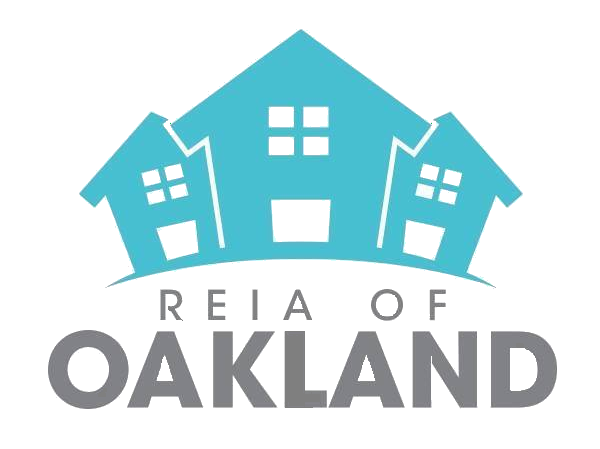
To get the most profits from the real estate business, you need to decide what kind of transaction and type of property best fits your resources and goals. After all, the most successful real estate investors don’t limit themselves to just one strategy.
Now, wholesaling is a great way to get your feet wet in the real estate market. But, after dipping your toes in with wholesaling, you might also be curious to try other adjacent methods to the investment strategy—whole-tailing being one of them.
While wholesaling involves buying a contract from a house owner and finding an interested third party to purchase the home, whole-tailing is a hybrid of wholesaling and house-flipping. In a nutshell, a whole-tailer will purchase a distressed property, make quick and easy renovations to improve the value, then put it up on the market themselves.
While a house flipper makes the finishing touches to an entire property, a whole-tailer only addresses the issues that are the most obvious, have a high impact on the price, and are easy to address. Then, they try to sell the property to a buyer willing to fix up the rest of the house themselves.
Whole-tailing isn’t all that different from wholesaling.
So, which type of real estate investment strategy should you focus on?
Here, we’ll discuss the advantages and disadvantages of the two strategies for you to decide which type of method is more appropriate for your means.
What is Wholesaling, exactly?
Let’s start by refreshing our minds with how real estate wholesaling works. Wholesaling is a short-term real estate transaction where the investor looks to make a profit with very little capital investment. Here’s how that typically goes:
- The first step of a wholesale deal is to find a good deal on a property with a motivated seller. You’ll then execute a purchase and sell agreement with the seller, who is usually the homeowner.
- During the execution of the contract, both parties will agree on an earnest money clause. This clause allows you to deposit a sum that serves as your collateral for finding a buyer. If you can’t find a buyer within the allotted time, you will lose your earnest money.
- The next step is for you to find a willing buyer for the property. Once you’ve found a willing buyer, the both of you will enter an assignment where the buyer will take over your role in the purchase and sell contract.
- Lastly, the buyer will pay the agreed-upon value for the property and your assignment fee—also known as your wholesale fee or wholesale profit.
Here’s an example to illustrate what a wholesale deal looks like.
You find a homeowner willing to sell his property for $55 thousand, so you enter into a purchase and sell agreement with him. You then find a buyer willing to purchase the house for slightly higher at $65 thousand. Once you find a willing buyer, you’ll enter a signed agreement with them and they’ll assume your position on the purchase.
Finally, you’ll close the deal with the buyer and homeowner, where the buyer will pay $55 thousand to the seller and $10 thousand to you for your assignment fee.
Advantages of Wholesaling
Now that we know what the process of wholesaling entails, let’s discuss some of the advantages that wholesaling provides. This will help you see the most important benefits that you’ll get with this method:
- It’s the most pain-free way to get into real estate investment. You can learn the basics of the real estate market without much risk.
- You’ll earn profits in a short amount of time. The wholesale process is relatively quick in comparison to other real estate transactions such as house-flipping or whole-tailing, taking between a week to a month before you can pocket your profits.
- You’ll have high rewards with low risks. You don’t need a large amount of capital. In fact, you sometimes don’t spend anything when conducting a wholesale transaction. That said, most experts agree that you can see profits of around 5-10% of a property’s value.
Disadvantages of Wholesaling
Wholesaling comes with a lot of advantages, but that doesn’t mean it’s a guaranteed prospect. Let’s take a look at some of the disadvantages inherent to wholesaling.
- Wholesaling tends to have a negative stigma. Because wholesaling is the gateway to becoming a part of the real estate business, it often attracts inexperienced people looking for quick and easy profits. Inexperienced wholesalers can commit mistakes such as overestimating a property’s ARV or underestimating the estimated repair costs (ERC).
- Wholesalers face trouble if they can’t find a buyer. If you can’t find a buyer within the allotted time you and the seller agreed on, you will lose your earnest money deposit.
What is Whole-tailing, Then?
As mentioned before, whole-tailing is an in-between of wholesaling and house flipping.
In a whole-tail deal, you’ll still buy a distressed property from a motivated seller. Unlike wholesaling though, you won’t be finding another buyer to purchase the property. Instead, like a flip, you will be renovating the property then will try to sell it yourself. Unlike flipping a house though, whole-tailing involves making minimal repairs to get the house sold as soon as possible.
Those minimal repairs are done to address the most visible and unattractive problems that negatively impact the value. Once you’ve made the repairs to make the property mortgage eligible, you can start searching for the perfect buyer.
Your dream buyers are usually homeowners willing to fix it up themselves. However, you can also sell it to a new house flipper as well for them to finish the project.
Now, right off the bat, it’s clear whole-tailing requires more time and effort to generate good profits. You need to do a thorough examination of the property to determine which issues need to be addressed. Remember: You aren’t fixing everything, just the most important things.
This is not a skill that many people have—which is why wholesaling is more common.
All that aside, if you have the expertise, whole-tailing a property can be a more profitable option than wholesaling. Instead of just earning an assignment fee, you’ll be earning the entire amount of the property. If you’re confident that you can:
- Afford to buy the distressed property
- Perform quick repairs on the house
- Put it up for sale and entice potential buyers
Then, whole-tailing can potentially be a lucrative venture for you.
Depending on the state of the property and the amount of money you’re willing to invest in a property, whole-tailing might be a more profitable option.
Advantages of Whole-Tailing
Whole-tailing is considered a riskier investment than wholesaling. You’re risking more than earnest money when dealing with a whole-tail. But, that doesn’t mean that whole-tailing is a worse option than wholesaling. In fact, it comes with some benefits like:
- Wider buyer pool than wholesaling. When conducting a whole-tail, both regular buyers and investors are both be interested in your property. This is in contrast to wholesales, where investors are your primary market.
- Higher potential profits over wholesale. When whole-tailing, you have higher profit margins than a wholesaler. In a wholesale, you’re looking at around 5-10% of a property’s value in profit. If you can whole-tail a property, you can see far more than that. For example, a property is up for sale for $50,000. If you wholesale the property, you’re looking at a profit of around $2500-$5000. But in a whole-tail you can potentially make more than that. Here’s a simple breakdown:
- Property bought at $50,000
- Repair costs of wiring and plumbing: $8000
- ARV: $80,000
- Estimated holding costs: $1000
- Estimated resale fee: $4800
- Total costs: $63,800
- Gross profit for a whole-tail: $16,200
Disadvantages of Whole-Tailing
Now, let’s take a look at some of the disadvantages of whole-tailing. You might earn more from whole-tailing than wholesaling, but it isn’t all sunshine and rainbows:
- Riskier than wholesaling. In a whole-tail transaction, if you’re unsuccessful in selling the property, you’re looking to lose all the money you invested in the project.
- Whole-tailing requires more capital than wholesale. You also need to consider the purchase price and the repair costs when conducting a whole-tail investment, compared to a wholesale deal where you can make profits without any capital.
- Holding costs. You will have to deal with property holding costs if you plan to make it a whole-tail investment. When whole-tailing a property you’ll need to deal with the expenses that come with having a property. This means dealing with any utility fees or homeowner association fees.
Wholesale or Whole-tail? Both Sound the Same But Are Very Different
If you are new to the real estate business, wholesaling can be a good introduction. It is a low-risk, high-reward deal that can get your toes wet in the real estate market. You can learn the ins and outs of the business in a relatively low-risk situation.
But if you have the adequate know-how to conduct a whole-tail transaction, it might be the better option for you. You can earn greater profits in a whole-tail deal, making it a more attractive choice if you have the knowledge and the means.
At the end of the day, the best option depends on how well-versed you are in real estate—and how much money you’re willing to invest to earn a profit. Be clear on that before you get started, and you’ll have the highest chance of succeeding in your real estate investment venture.
If you have any questions or suggestions, feel free to leave them in the comments section below!





